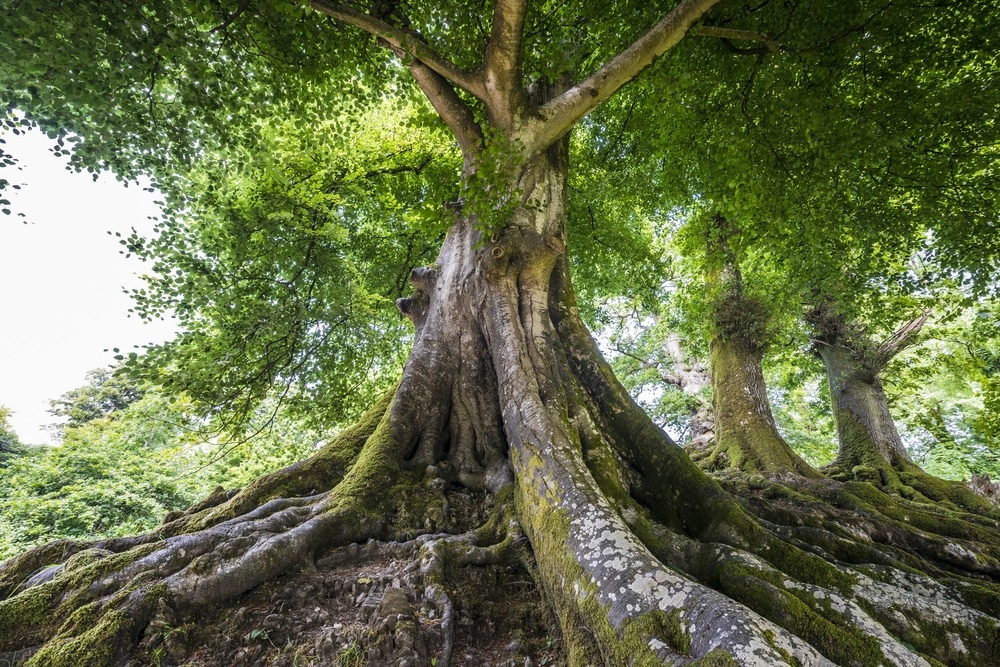Reviewed by Danielle Ellis, B.Sc.Jun 7 2023
Older, long-lived trees are thought to contribute more to the creation and maintenance of genetic mutations than short-lived trees, according to research on the link between the growth rate of tropical trees and the frequency of genetic mutations they collect.

Image Credit: Kuttelvaserova Stuchelova/Shutterstock.com
The study, which was been accepted for publication as a Reviewed Preprint in eLife, offers what the editors call persuasive evidence that tree species experience mutations at a comparable annual rate, regardless of cell division and regardless of the pace of development.
The results could help guide policies for preserving ecosystems, especially in Southeast Asia’s tropical forests, which are in danger due to deforestation and climate change.
Biodiversity ultimately results from mutations that provide genetic variation for organisms to adapt to their environment. However, how and when these mutations occur in natural environments is poorly understood.”
Akiko Satake, Study Co-Lead Author and Professor, Department of Biology, Faculty of Science, Kyushu University
Somatic mutations are spontaneous alterations to an organism’s DNA that take place during the course of its existence. They can develop as a result of internal issues like mistakes in DNA replication or external elements like UV light.
Particularly in tropical ecosystems and trees, which are less well characterized than those from more temperate climates, it is unclear which of these variables generates mutations most frequently.
Satake and colleagues investigated the rates and patterns of somatic mutations in two tropical tree species native to central Borneo, Indonesia: the slow-growing Shorea laevis (S. laevis) and the fast-growing S. leprosula. S. leprosula grows more than three times as rapidly as S. laevis.
The team was able to learn more about the effects of growth rate on the accumulation of these mutations and its possible function in promoting evolution and species variety by contrasting the somatic mutations of the two tree species.
They obtained 32 samples in all, including seven DNA samples from the highest-level leaves on the tree branches and samples from the trunk of each tree.
The average age of each species in the sampling region was calculated using the length and diameter of the trees at breast height. S. leprosula trees had an average age of 66 years, but S. laevis trees had an average age of 256 years.
The researchers used the DNA extracted from the leaves to create a reference genetic record for each species of tree to determine the mutations present. Long-read PacBio RS II and short-read Illumina sequencing were used to ascertain the genome’s sequence.
Each sample had its DNA extracted twice, enabling researchers to discover single nucleotide variants (SNVs) inside the same person by comparing those that were the same across the two samples. A single tree branch was identified to contain the bulk of mutations.
However, other mutations were discovered on many branches, suggesting that at some time during the development of the tree, they had been passed from branch to branch.
Researchers found that the number of mutations increased linearly with the physical distance between branches in both species. Slow-growing trees presumably accrue more somatic mutations since the rate of mutations per meter was, on average, 3.7 times higher in the slow-growing S. leavis than in the fast-growing S. leprosula.
The two species exhibited similar rates of mutation each year, nevertheless, after adjusting for the two species’ various rates of growth. This discovery shows that somatic mutations accumulate independently of DNA replication and growth rate in a clock-like way as a tree matures.
We also found that somatic mutations are neutral within an individual – that is, they are neither beneficial nor detrimental to survival. However, those mutations transmitted to the next generation are subject to strong natural selection during seed germination and growth.”
Ryosuke Imai, Study Co-Lead Author and Post-Doctoral Fellow, Department of Biology, Faculty of Science, Kyushu University
Imai added, “This suggests that somatic mutations accumulate with time, and older trees contribute more towards generating genetic variation and adaptation to their environment, thereby increasing the chances of their species’ survival.”
Imai and colleagues advocate for additional research in the area. To further corroborate the findings, they claim that mathematical modeling would be necessary to take into account the asymmetric division of cells during elongation and branching.
In trees, somatic mutations can be transmitted to seeds, resulting in rich genetic variations within subsequent generations. As the tropical rainforests of southeast Asia face the threats of climate change and deforestation, our study suggests that long-lived trees may play a crucial role in maintaining and increasing the genetic variation of these tropical systems.”
Masahiro Kasahara, Study Author and Associate Professor, Department of Computational Biology and Medical Sciences, University of Tokyo
Source:
Journal reference:
Imai, R., et al. (2023). The molecular clock in long-lived tropical trees is independent of growth rate. eLife. doi.org/10.7554/eLife.88456.1